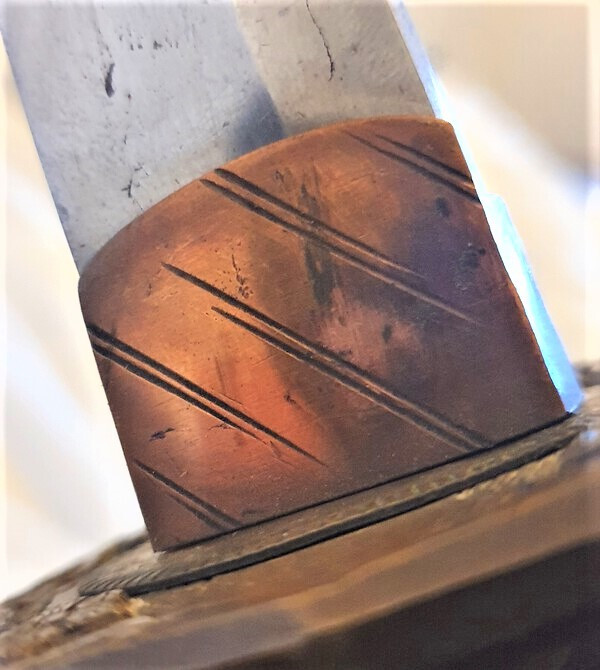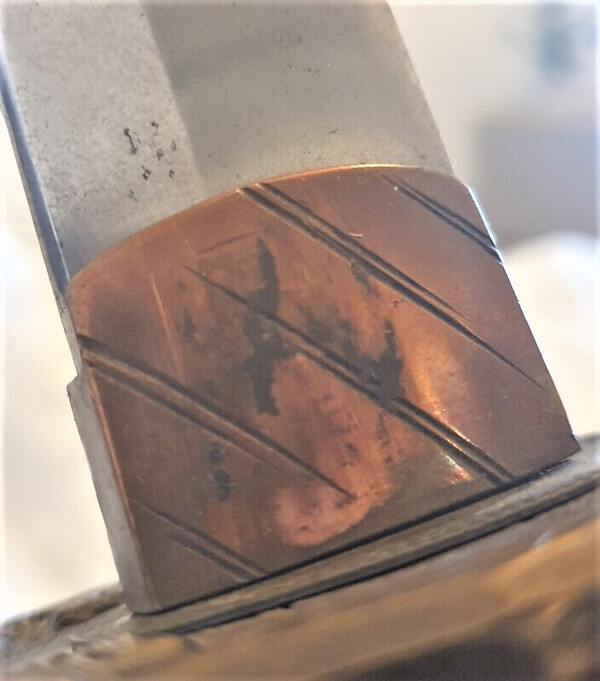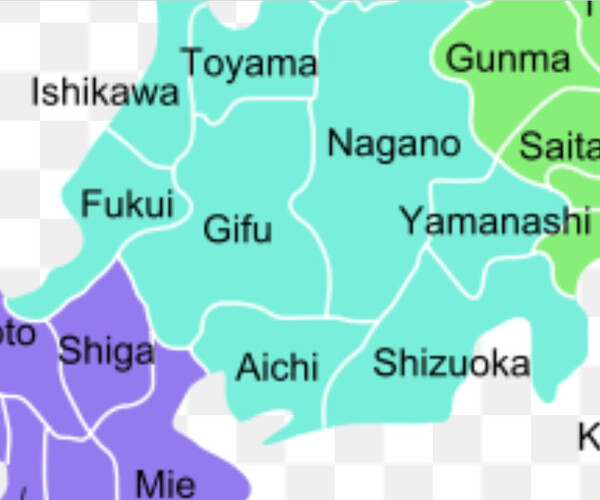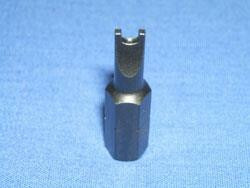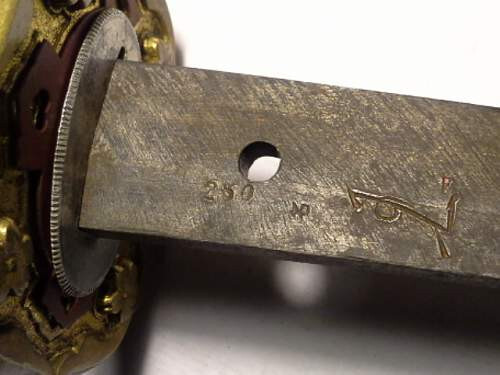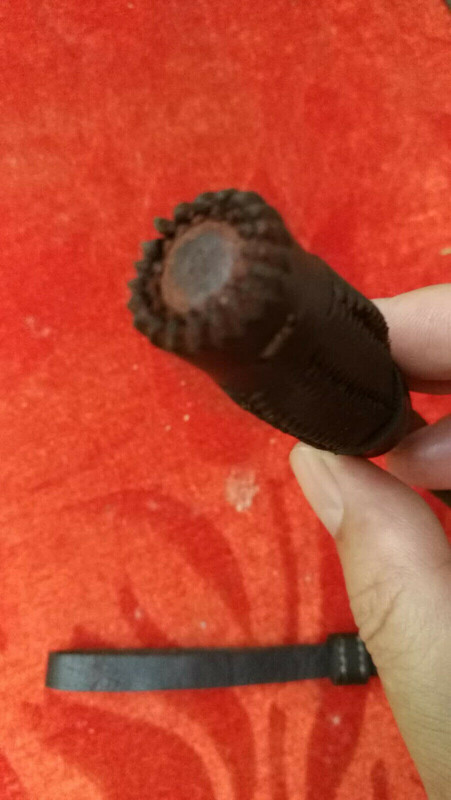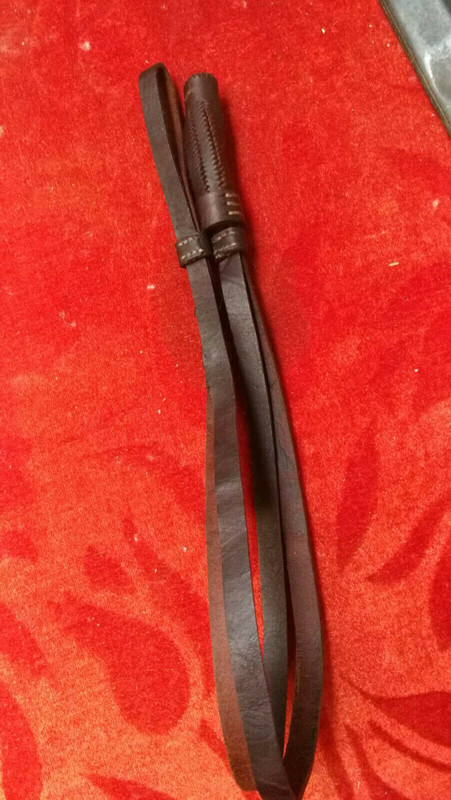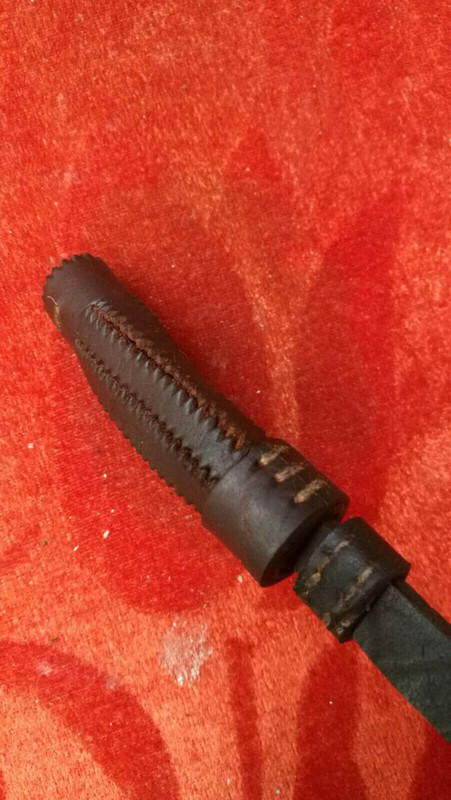-
Posts
13,297 -
Joined
-
Last visited
-
Days Won
159
Content Type
Profiles
Forums
Events
Store
Downloads
Gallery
Everything posted by Bruce Pennington
-
@Pippo - am I safe in assuming there is no date on the other side?
-
The use of the yamagata fits our earliest observations about the mark seeming to be used in the Tokyo area. And I see what you mean about the TO appearing on a few kabutogane. I wonder about the idea, though, of waiting for finished gunto before stamping. Doesn't seem like an effective method of meeting a stamping requirement (if one existed), as many, many blades were sent out to various shops for fitting which would not necessarily ever make it back to the arsenal for final inspection. If this was their method, we should be seeing way more TO stamped kabutogane. We have numerous blades double and sometimes triple stamped by Kokura, Nagoya, and Gifu (who the heck was that? Civil Seki Cutlery Manufacturers Assoc?). Stamps all over the nakago ..... but when we get to Tokyo - meh. Kabutogane here, W on blade there, but mostly absent knowing the vast number of blades that cycled through the arsenal. We should be seeing the TO all over the place. Unless ..... unless there was no requirement at all? Yet, I don't think that is the answer. We have a regulation chart showing the officially designated stamps of each arsenal and their associated inspectors. So, it must have been a regulatory requirement. Another issue - by stamping koshirae, not blades, showato make it into the world without being marked as showato. What does that say? The original intent of the Seki industry to mark quality showato was a commercial move, not military (as far as we understand). So, are we seeing that the military stamping of swords was totally disassociated from the issue and truly a simple inspection/acceptance mark? Maybe so. But why the totally different approach to stamping by Tokyo? Not very uniform for a highly regulated military function. I'm still puzzled.
-
I've seen similar themes, but I like the simplicity and the offset lines. Clean lines, well crafted. Posted by @Alex1984 HERE.
-
Thanks buddy! I like that one.
-
A closer look at the nakago showing the macki (notches where the nakago meets the blade) would be interesting. From the top photo, it seems the machi are almost worn down to nothing, which I've read, means many polishes?
-
Alex, Could I get a clear, close-up of the habaki, please? I've seen this pattern, but yours has a nice look to it.
-
@Stegel Dang! Good point Dave! Very Interesting.
-
Speaking of Arsenal Stamps - In 1942'ish, the Army assumed control of all sword production, and we see stamps on blades greatly proliferate. The numbers of observed stamped blades matches. Showa and large Seki stamps were the stamps being used prior to this, and both quickly taper off at 1942. I had been assuming that there must have been some regulation or mandate from the Army/Navy for this. I recently realized the vast majority of stamps come from the Seki/Gifu area. Showa, Large-Seki, Na (of Nagoya), and Gifu account for the lion's share of observed stamps. There are a smattering of Kokura ('42-'45) and a few Osaka ('43-'44). So where's Tokyo 1st???? With the Type 95s it is clear that Tokyo 1st was stamping blades, but stamps on officer blades are almost non-existant. I have 4 undated zoheito with the "TO" and one officer blade with the "KI" (2nd Factory of Tokyo 1st Army Arsenal). FIVE blades from Tokyo vs almost 300 blades from mostly Seki/Gifu and Nagoya. About 7 from Osaka, and around 10 with Kokura (but even these are mixed with Nagoya stamps). An interesting point is the co-location of Gifu and Aichi (Nagoya's prefecture): These two prefectures, combined, account for at least 90% of stamped blades. We know that Gifu/Seki produced approximately 70% of WWII blades, so why aren't there 30% of blades stamped with everything else, especially Tokyo??? The nearly total lack of Tokyo stamps on officer blades has me really puzzled.
-
Yes, good example Thomas!
-
Thanks Jonathan! It's clear there is a threaded end of a nakago there. The holes in the nuts, as well as the slot of the screw show a little boogering. That leaves us at least 2 choices -1. Blade was factory made this way, but sword was disassembled by previous owners, or 2. Handle was disassembled in the field to remove original blade and insert current blade. No way to know, but I'd lean toward choice 2. I still don't see a G.I. creating and threaded nakago end like this, but I don't know European blades. Maybe it's possible they had some with such nakago ends.
-
Ok. It is a curious piece indeed. Can't see the end of the handle, but from the side it appears to have the threaded end of a nakago secured by the standard nut. Correct? If so, that seems a tad more craftsmanship than a G.I. trench knife would have.
-
@Leen, The last character on the date is "Spring", so it was "Spring 1942". Kanenobu became an RJT smith, likely after this blade was made (from lack of star-stamp). The program had only just begun at this time, so he must have gotten qualified sometime later. You will often see inspection stamps on the mune, like this, on star-stamped gendaito, so it does not mean the blade is non-traditional. Your small stamp above the "HO" in the corrosion does look like a "Na", like Thomas said. I have a few other gendaito with this combination on file, all between 1940 - 1942. They seem to stop after '42. @Bruno - I don't think I have your Mitsunobu on file, can I get a photo of the date and full mei, please? The small stamp on the mune is a Seki stamp, too.
-
-
I initially thought it could be a broken 32 turned into a trench knife, too. But there would be evidence of the original fuller. @ribendao - Jonathan, would you do us a favor and take the handle off? If it's an original 32 blade, the nakago will look something like this:
-
-
-
Pics brought over for discussion, rather than reviving the old thread: The star is of the Tokyo 1st Army Arsenal, and the stamp on the right is one of the "unknowns". I don't understand 'Gunto's' post claiming the single one to be of the 'Chuo Kogyo Co'. It looks more like a double-struck "TO", Tokyo Arsenal Inspector stamp. I looked up Chuo Kogyo Co and the stamps on Nambu pistols were quite different than this. What do you think Thomas?
-

Copper type 95 sword knot: Real or replica?
Bruce Pennington replied to pt1093's topic in Military Swords of Japan
Like all things we collect, the best way to know how to spot a fake is to study the real thing enough that the fake characteristics stand out when you see them. There are other guys who are more qualified to touch on this for you, but here's an easy one - look at the age of the leather. Fakes are almost always new leather, while the real ones clearly have age. Fake Real Interestingly, quite often on ebay, the sellers actually say "Replica" or "Copy" in the ad. They are almost always from China. -
Not bad for a rookie. He did his homework and had a couple of "well-said" spots. A brief moment perpetuating the "pilot sword" myth as he held his fingers up showing the size of a tanto (which actually would have been a pilot tanto, if that was what he was describing), but he also said these were "issued to pilots" which sounds like he's mind-melded the stories of a couple cases where flying unit commanders presented kamikaze knives to their pilots in a ceremony. He used his own Type 95, and sounds like he might have gotten bit by the Gunto Bug, so overall nicely done.
-
There's a real name for these that I've never gotten committed to memory, but John is spot-on. Here's another example with associated reg pages. @Pippo, have you gotten the mei translated? I'd like to add the photos to my Showa stamp files. Also, fair to assume no date on the other side? More questions - Is that rayskin same' or fabric? Can you tell if all the metal fittings were originally gilded and painted and have somehow been degraded, or are they possibly late-war, non gilded, non-painted? I have seen a couple of late-war kaigunto with upgraded saya, like yours, but it's not common. I have a kai with an ancient blade in it, with similar fittings. I can see places where the original gilding is there, but most of the gilding on all of the parts is faded, or worn, or degraded away somehow. Even the black lacquer on the same' is mostly missing. And whatever paint or patina that used to be on the tsuba/seppa set is gone. The sharkskin on the saya is worn and shows buckling at the seems. It looks like it laid in a swamps for a few weeks before someone picked it up. A bit of a mystery to me. I cannot imagine how all the gilding would have disappeared.
-

“Server Not Found”
Bruce Pennington replied to Bruce Pennington's topic in Forum Technical Details and Maintenance
I'm no longer at the base, and am back home. I go out there periodically, so when I do, I'll give that a try. I considered that too, but I would think that "Gunboards" would have been blocked as well, unless the firewall didn't recognize the word. And even for NMB, it wasn't 100% blockage. Occasionally throughout the day, I would get through. But now, second day at home, and not a single problem. So I'm certain it was their system. Sorry for all the hassles, but I was going into withdrawal, not getting my NMB fix! -

Genuine fake junk
Bruce Pennington replied to PNSSHOGUN's topic in Auctions and Online Sales or Sellers
Nice start! Is it just me, or are the left and right labels reversed? -

“Server Not Found”
Bruce Pennington replied to Bruce Pennington's topic in Forum Technical Details and Maintenance
I’m back home at my Wi-Fi and it immediately went through to the website. Must be a problem with the Wi-Fi service at the Air Force Base. Their tech guy could not detect my particular problem, but it does not seem to be a problem at my house using a different service. -
I’ve seen this pattern before but never had any idea of its meaning. But that makes perfect sense – Castlewall! I like it! Nice story on finding some thing to fit.


